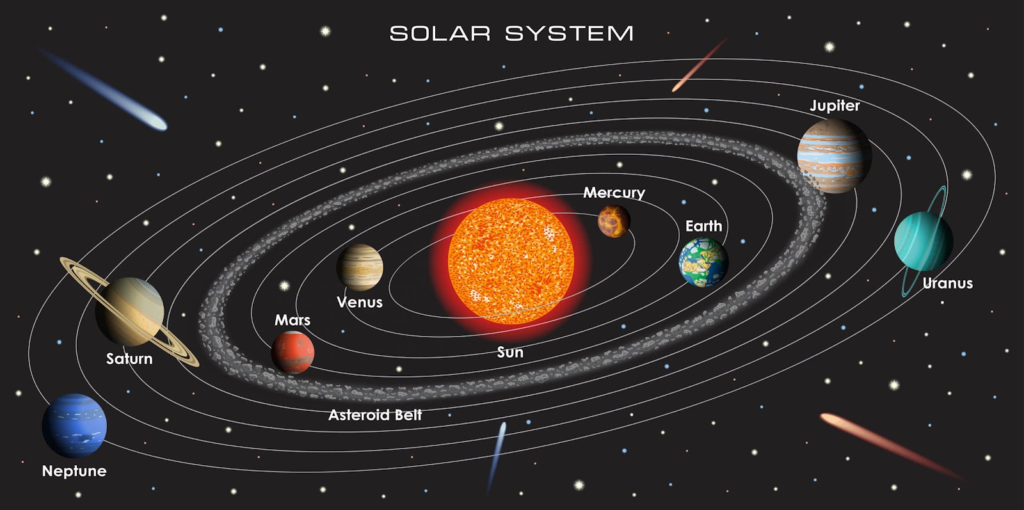P. Sreekumar, Satish Dhawan Professor at the Indian Space Research Organisation (ISRO) and advisor to its space science programme, stated that ISRO failed to obtain formal approval and funding from the government to send for the Venus mission, and that the mission may be postponed to 2031 as a result.
Optimal launch windows from Earth to Venus occur once every 19 months; backup dates were 2026 and 2028 if the 2024 window was missed, but the 2031 window is currently very good.
Shukrayaan I going to be an orbiter mission. It currently has a high-resolution synthetic aperture radar and a ground-penetrating radar as scientific payloads. From an elliptical orbit, the mission is expected to study Venus’s geological and volcanic activity, emissions on the ground, wind speed, cloud cover, and other planetary characteristics.
ALSO READ: Indian scientists make first-of-its-kind discovery on Mars
- Both the U.S. and the European space agencies have Venus missions planned for 2031 — VERITAS and EnVision, respectively — while China may launch around 2026 or 2027.
What Causes the Delay?
- ISRO had originally planned to launch Shukrayaan I in mid-2023 but the pandemic pushed the date to December 2024.
- Other ISRO missions, including Aditya L1 and Chandrayaan III, have also been affected by manufacturing delays and commercial launch commitments.
- Optimal launch windows from Earth to Venus occur once around every 19 months. This is why ISRO has ‘backup’ launch dates in 2026 and 2028 should it miss the 2024 opportunity.
- But even more optimal windows, which further reduce the amount of fuel required at liftoff, come around every eight years.
- Right now the 2031 window is considered very good by the experts.
- The mission is also “waiting for formal approval and money”, which are required before spacecraft assembly and testing.
ALSO READ: DRDO Developing a Space Borne Imaging Radar Unfurlable Reflector Antenna
What is Shukrayaan I Mission?
- About:
- Shukrayaan I will be an Orbiter Mission. Its scientific payloads currently include a high-resolution Synthetic Aperture Radar (SAR) and a ground-penetrating radar.
- SAR would examine Venus’ surface, despite the clouds around the planet, which lowers visibility.
- It refers to a technique for producing high-resolution images. Because of the precision, the radar can penetrate clouds and darkness, which means that it can collect data day and night in any weather.
- The mission is expected to study Venus’s geological and volcanic activity, emissions on the ground, wind speed, cloud cover, and other planetary characteristics from an elliptical orbit.
- Shukrayaan-I will be launched on either GSLV Mk II or GSLV Mk III, the latter allows more instruments or fuel to be carried, according to ISRO.
- Shukrayaan I will be an Orbiter Mission. Its scientific payloads currently include a high-resolution Synthetic Aperture Radar (SAR) and a ground-penetrating radar.
- Objectives:
- Investigation of surface process and shallow subsurface stratigraphy. Until now, no prior observation of the sub-surface of Venus has been done.
- Stratigraphy is a branch of geology in which rock layers and layering are studied.
- Study of the structure, composition and dynamics of the atmosphere.
- Investigation of Solar wind interaction with Venusian ionosphere.
- Investigation of surface process and shallow subsurface stratigraphy. Until now, no prior observation of the sub-surface of Venus has been done.
- Significance:
- It will help to learn how Earth-like planets evolve and what conditions exist on Earth-sized exoplanets (Planets that orbit a star other than our sun).
- It will help in modelling Earth’s climate and serves as a cautionary tale on how dramatically a planet’s climate can change.
| Previous Missions Sent on Venus | |||
| US | Russia | Japan | Europe |
| Mariner series 1962-1974,Pioneer Venus 1 and Pioneer Venus 2 in 1978,Magellan in 1989. | Venera series of space crafts 1967-1983,Vegas 1 and 2 in 1985. | Akatsuki in 2015. | Venus Express in 2005. |
What is Venus?
- It is named after the Roman goddess of love and beauty. It is the second planet from the Sun and sixth in the solar system in size and mass.
- It is the second brightest natural object in the night sky after the Moon.
- Unlike the other planets in our solar system, Venus and Uranus spin clockwise on their axis.
- It is the hottest planet in the solar system because of the high concentration of carbon dioxide which works to produce an intense greenhouse effect.
- A day on Venus is longer than a year. It takes Venus longer to rotate once on its axis than to complete one orbit of the Sun.
- That’s 243 Earth days to rotate once – the longest rotation of any planet in the Solar System – and only 224.7 Earth days to complete one orbit of the Sun.
- Venus has been called Earth’s twin because of the similarities in their masses, sizes, and densities and their similar relative locations in the solar system.
- No planet approaches closer to Earth than Venus; at its nearest it is the closest large body to Earth other than the Moon.
- Venus has 90 times the atmospheric pressure of Earth.
